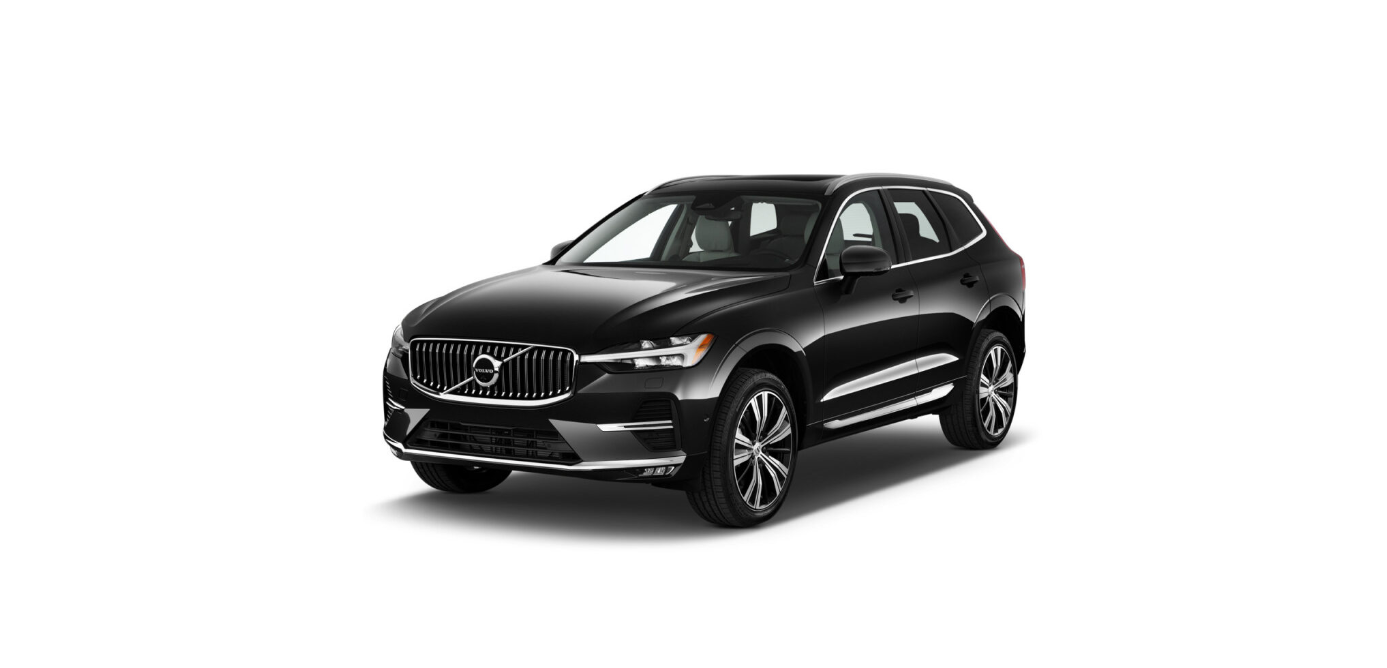2022 XC60 Volvo Loading
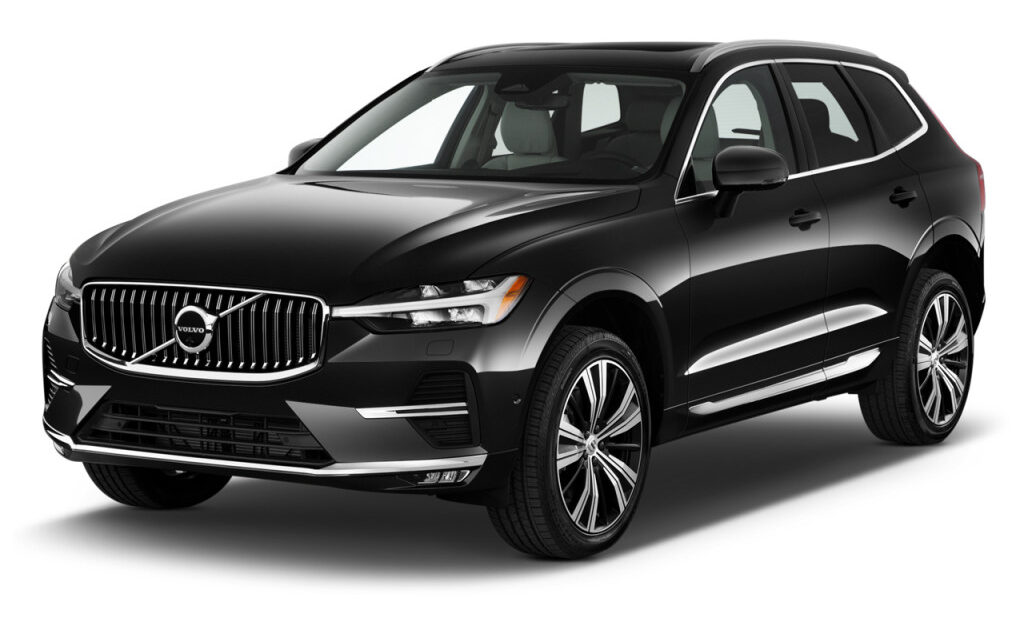
Recommendations for loading
Payload depends on the car’s curb weight. The total weight of the passengers and all accessories reduces the car’s payload by a corresponding weight.
Warning
The car’s driving properties change depending on the weight and positioning of the load.
Loading in the cargo area
Good things to remember when loading:
- Position the load firmly against the rear seat’s backrest.
- Heavy objects should be placed as low as possible. Avoid placing heavy loads on lowered backrests.
- Cover sharp edges with something soft to avoid damaging the upholstery.
- Secure all loads to the load retaining eyelets with straps or web lashings.
Cover sharp edges and sharp corners with something soft.
Switch off the engine and apply the parking brake when loading/unloading long items. Otherwise, you may accidentally knock the gear lever or gear selector with the load into a drive position – and the car could then move off.
Increasing the space in the cargo area
A through-load hatch in the rear seat can be folded down for carrying long and narrow loads.
Level control of the car’s rear section
Level control is performed via control at the rear on the right-hand side in the cargo area’s side panel.
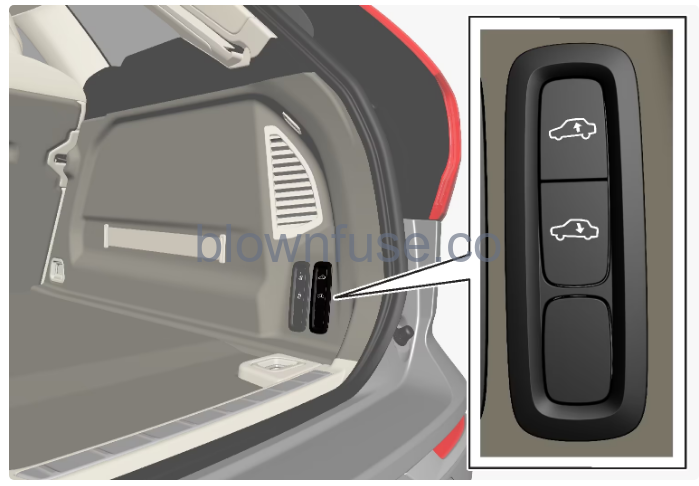 Controls for raising/lowering the car’s rear section.
Controls for raising/lowering the car’s rear section.- The control consists of two buttons – one button that lowers and one button that raises the rear section of the car.
- For raising or lowering, each button must be held depressed until the rear section has reached the desired level.
- It is not possible to raise the car’s rear section higher than its normal level.
- During driving, the rear section height will return to the normal level.
Bag hooks
Along the sides
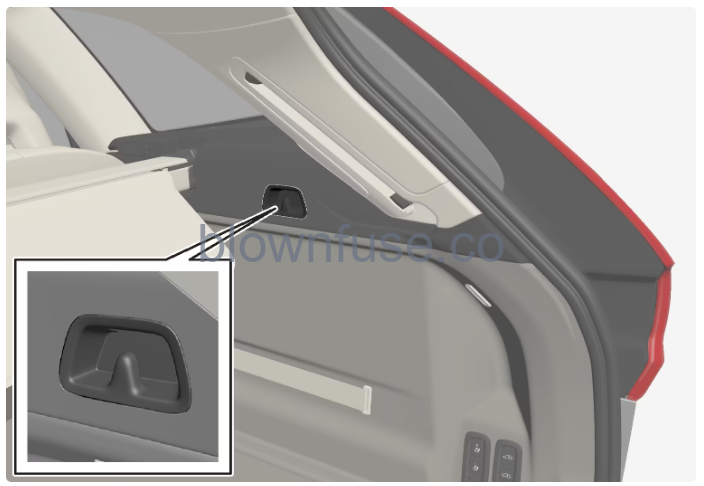 There is a bag hook in the side panel on each side of the cargo area.
There is a bag hook in the side panel on each side of the cargo area.Operating cargo cover
Full-cover position
 Grip the handle and pull the cargo cover out to the end position.
Grip the handle and pull the cargo cover out to the end position.- Hook the attachment pins into the recesses at the cargo area’s rear pillars.
- The cargo cover is locked in the full-cover position.
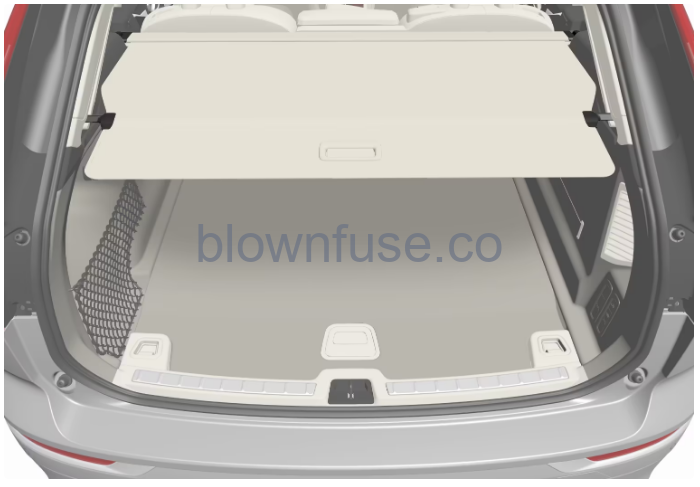 Cargo cover in full-cover position.
Cargo cover in full-cover position.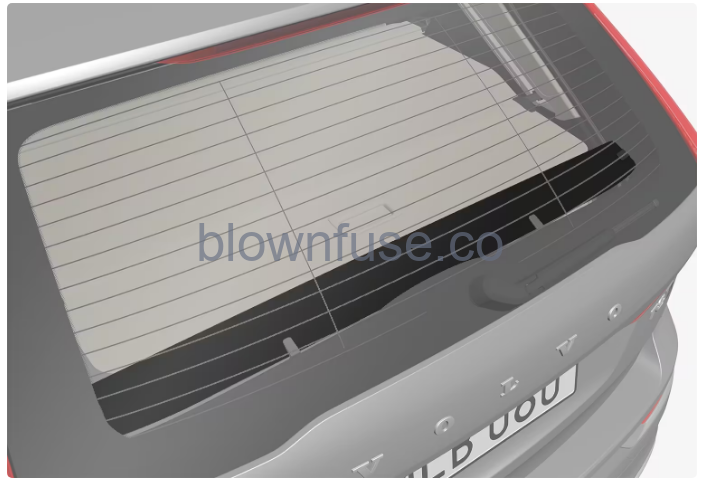 The rear panel fitted to the inside of the tailgate complements the cargo cover.
The rear panel fitted to the inside of the tailgate complements the cargo cover.Important
Do not load objects on top of the cargo cover.
Loading mode
From the full-cover position:
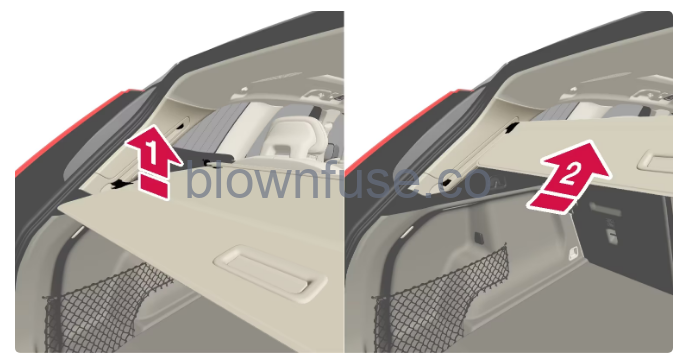
- Press the cargo cover’s handle section upwards slightly.
- The cover goes up until it stops in the loading position.
- Returning to the full-cover position from the loading position:
- Grip the handle and pull the cargo cover down to the end position.
- To facilitate, angle up the handle slightly so that the attachment pins pass the stops.
- Release the handle so that the attachment pins engage.
- The cover is locked in the full-cover position.
Retracting
- From the full-cover position:
- Lift up the handle and pull it back to disengage the cargo cover’s attachment pins and then release.
- From loading position:
- Grip the handle and pull out the cargo cover in the grooves – pull to the full-cover position. Lift up the handle and pull it back to disengage the attachment pins and then release.
- Retract the cover with its attachment pins outside of the side panels until it stops in the retracted position.
Fitting and removing cargo cover
Fitting cargo cover
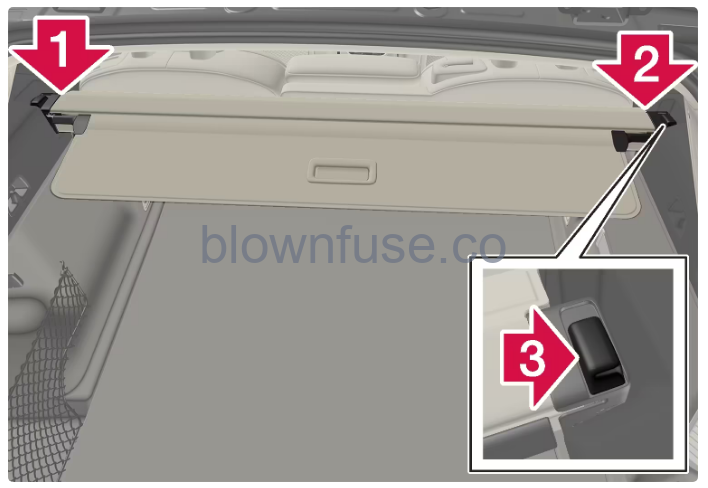 Insert one of the cargo cover’s end pieces in the recess in the side panel in the cargo area.
Insert one of the cargo cover’s end pieces in the recess in the side panel in the cargo area.- Then insert the other end piece in the recess in the side panel on the opposite side.
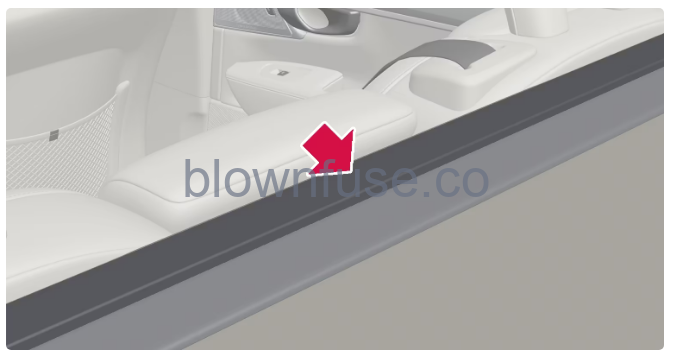 Ensure that the front panel is pointing down behind the backrests before the cassette is put in place.
Ensure that the front panel is pointing down behind the backrests before the cassette is put in place.- Press down the end pieces on both sides – one by one.
- When a “click” is heard and the red marking on each end piece has disappeared, the cargo cover is attached – check that it is affixed securely.
Installation of the tailgate panel
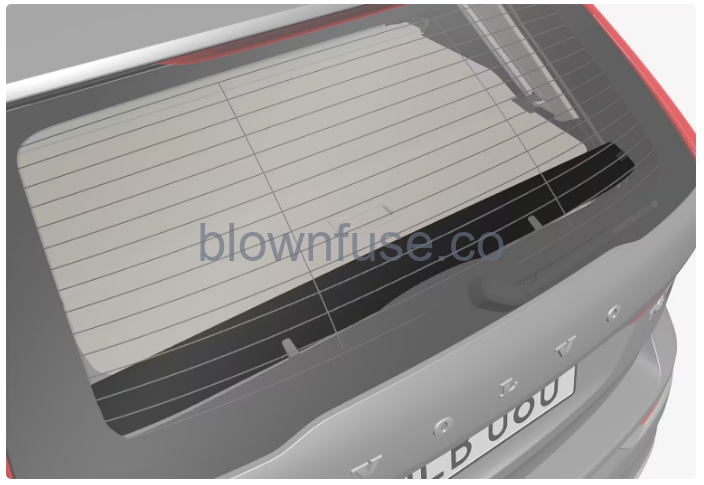 A panel must be fitted on the tailgate when using the cargo cover.
A panel must be fitted on the tailgate when using the cargo cover.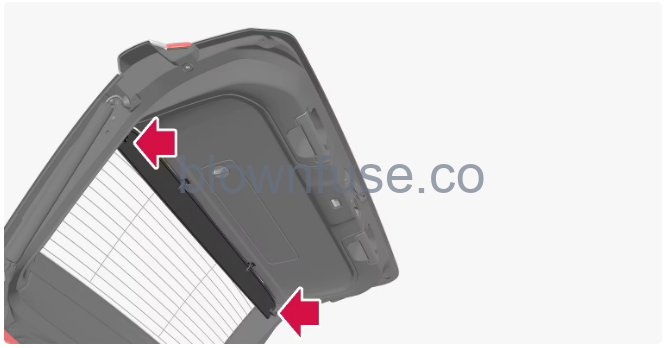 Turn the panel in the right direction with the screw side downward and guide the pin into the bracket on one side of the tailgate.
Turn the panel in the right direction with the screw side downward and guide the pin into the bracket on one side of the tailgate.Clamp the panel slightly to facilitate guiding the pin into the equivalent bracket on the other side.
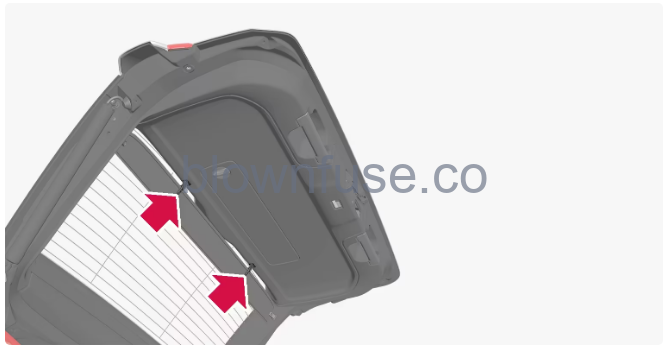 Press the two upper clips into the respective sockets in the tailgate so that they click into place.
Press the two upper clips into the respective sockets in the tailgate so that they click into place.Removing cargo cover
- In retracted position:
- Depress the button on one of the retracted cargo cover’s end pieces and lift out that end.
- Angle the cover up/out carefully.
- The other end piece loosens automatically and the cover can be lifted out of the cargo area.
Removal of the tailgate panel
If the cargo cover is not in use then the rear panel can be removed.
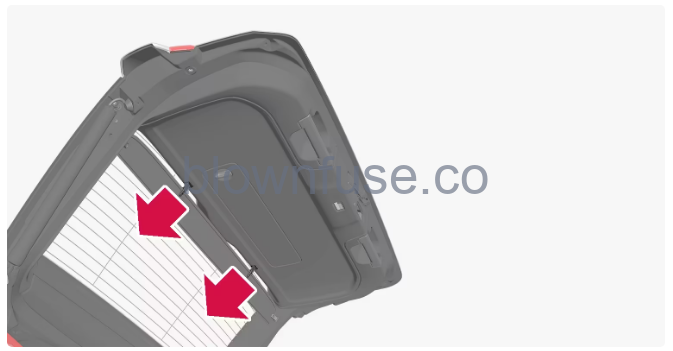 Pull the panel’s upper clips straight out from the tailgate.
Pull the panel’s upper clips straight out from the tailgate.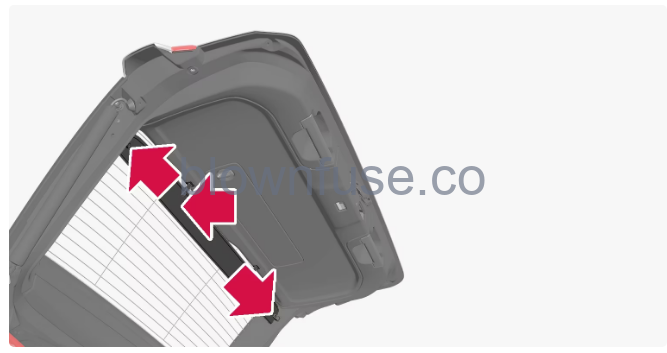 Carefully pull the panel away from the bracket on one side of the tailgate, and then from the other side. If necessary, clamp the panel slightly so that it is more flexible and facilitates removal.
Carefully pull the panel away from the bracket on one side of the tailgate, and then from the other side. If necessary, clamp the panel slightly so that it is more flexible and facilitates removal.Load retaining eyelets
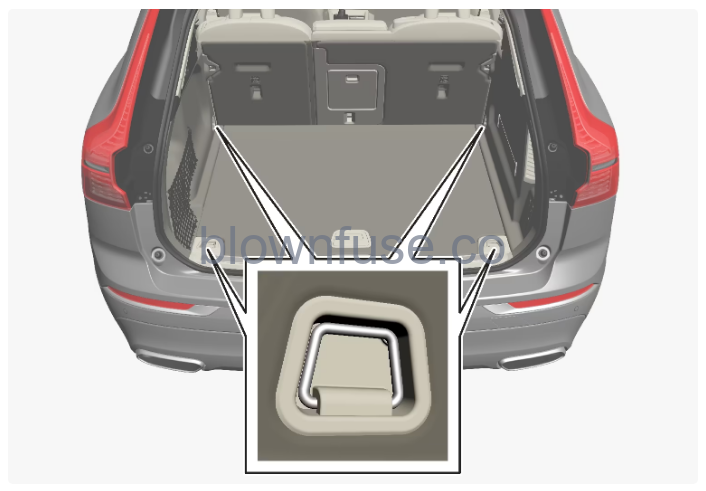
Hard, sharp, and heavy objects that are loose or protrude may cause injury during heavy braking.
Always secure large and heavy objects with a seatbelt or cargo retaining straps.
Fitting and removing safety grilles
The safety grille is crash-tested in accordance with the ECE R17 legal requirement and fulfills Volvo’s strength requirements.
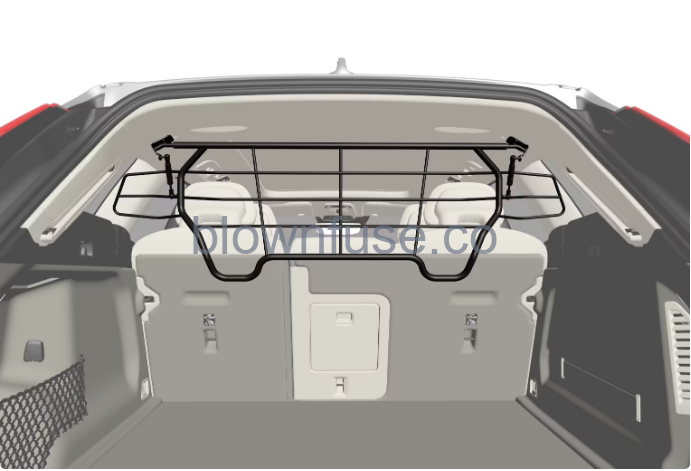 For safety reasons, the safety grille must always be attached and anchored correctly.
For safety reasons, the safety grille must always be attached and anchored correctly.Installation
Important
- The safety grille must only be used in the rear position (behind the rear seat) described here.
- Before first installing the safety grille, the existing plastic roof mountings must be replaced with steel roof mountings. Volvo recommends that replacing roof mountings is performed at an authorized Volvo workshop or retailer.
- Fold the rear seat’s backrest forward.
- Make sure that the safety grille is turned in the right direction. Lift in the safety grille through one of the rear side doors.
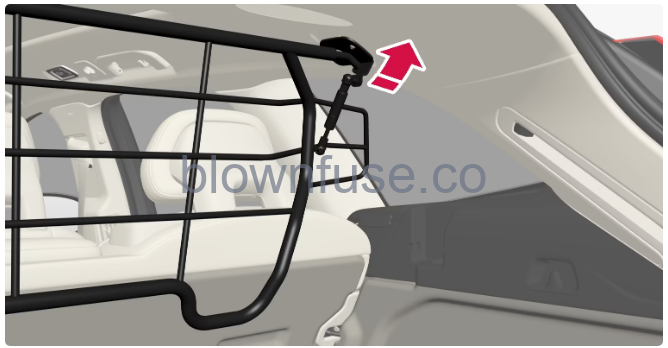 Position the safety grille’s brackets on the roof mountings.
Position the safety grille’s brackets on the roof mountings.- The next step is facilitated if two people hold the safety grille in the right position.
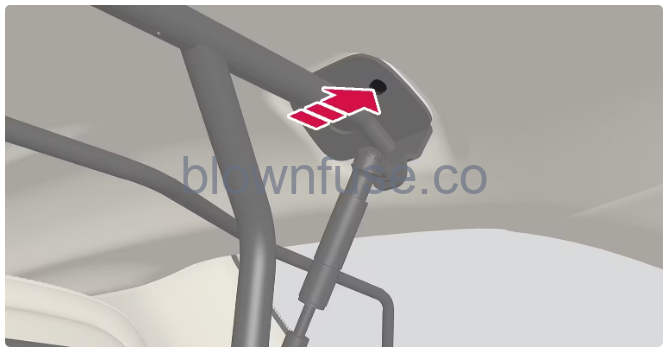 Insert the supplied screw and tighten using the supplied 6 mm Allen key. Repeat on the other side. Recommended tightening torque: 20 Nm (15 foot-pounds).
Insert the supplied screw and tighten using the supplied 6 mm Allen key. Repeat on the other side. Recommended tightening torque: 20 Nm (15 foot-pounds).- Check that the safety grille is properly fitted.
- Restore the backrest to the upright position.
- For more information about the tools required and methods for fitting/removal, see the installation instructions that were included with the initial purchase.
Fitting and removing the safety net
The safety net is fitted into four mounting points.
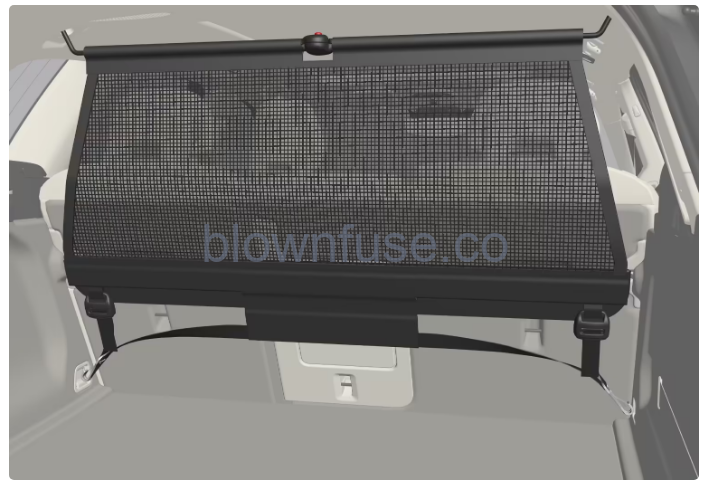
For reasons of safety, the safety net must always be fastened and anchored as described below.
The net is made of strong nylon fabric and can be secured in two different locations in the car:
- Rear fitting – behind the rear seat.
- Front fitting – behind the front seats.
Fitting the safety net
Damaged safety nets must not be used.
Note
- With forward mounting, the safety net is most easily mounted via the rear doors.
- Unfold the safety net and make sure that the split upper rod in the net is locked in its extended position.
- Hook one retaining hook of the net into the front or rear roof mounting with the anchoring strap locks turned towards you.
- Hook the net’s second attachment hook to the roof bracket on the opposite side.
- The telescopically sprung attachment hooks make it easier to fit.
- Take care to press forward the net’s retaining hooks for each respective roof mounting’s front end position.
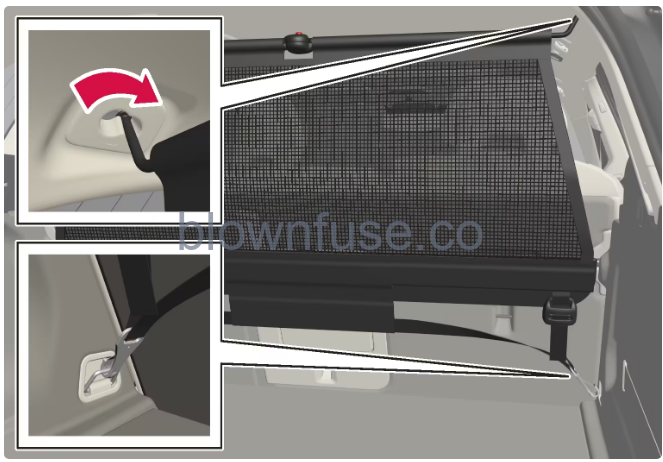 Rear fitting.
Rear fitting.- For rear fitting:
- With the net fitted in the rear roof mountings, hook the safety net’s puller straps into the front load retaining eyelets in the cargo area.
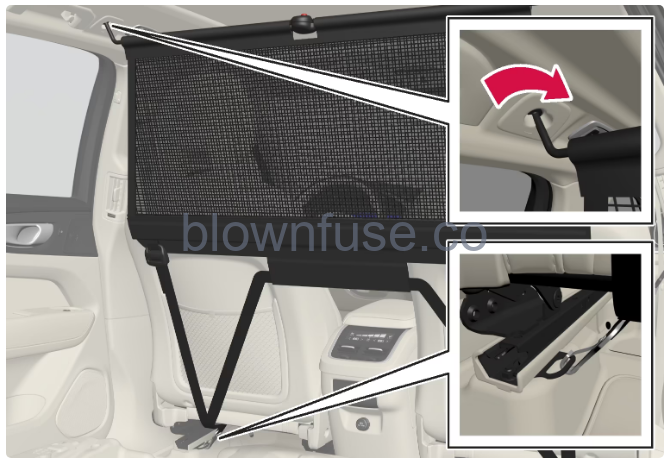 Front fitting.
Front fitting.- For front fitting:
- With the net fitted in the front roof mountings, hook the puller-straps into the outer eyes on the rear of all seat slide rails. The procedure is facilitated if the backrests are straightened and the seats are moved forward slightly.
- Pay attention to make sure that you do not exert hard pressure on the net when the seat and backrest are moved back again. Only adjust until the seat or backrest makes contact with the net.
If a seat or backrest is pushed back hard into the safety net, the net and roof mounts may be damaged.
Tension the safety net with the anchoring straps.
Removing the safety net
- The safety net can be easily removed and folded up.
- Reduce safety net tension by pressing the button in the anchoring strap lock and feeding out a little of the anchoring strap on each side.
- Press in the catches and detach both of the anchoring strap’s hooks.
- Undo the upper attachments and release the net from the roof mountings.
- Press the red button on the rod to enable folding and then roll up the net. Store the net in its case.
Roof load and loading on load carriers
This is to reduce the risk of damage to the car. Volvo’s load carriers are available for purchase at authorized Volvo retailers.
Carefully follow the installation instructions supplied by the carriers.
- Distribute the load evenly over the load carriers. Put the heaviest objects at the bottom.
- Check periodically that the load carriers and load are properly secured. Lash the load securely with retaining straps.
- If the load is longer than the car at the front, e.g. a canoe or kayak, fit the towing eye to its front socket and attach the bungee to this.
- The size of the area exposed to the wind, and therefore fuel consumption, increase with the size of the load.
- Drive gently. Avoid quick acceleration, heavy braking, and hard cornering.
The car’s center of gravity and driving characteristics are altered by roof loads.
Follow the car’s specifications with regard to weights and maximum permitted load.
Towbar-mounted bicycle rack
This is in order to avoid damage to the car and in order to achieve the maximum possible safety during a journey. Volvo’s bicycle racks are available for purchase at authorized Volvo dealers.
Carefully follow the instructions enclosed with the bicycle rack.
- Bicycle rack including load must weigh a maximum of 75 kg (165 pounds).
- Rear Auto Brake should be deactivated before driving with a bicycle rack.
The bicycle rack can loosen from the towbar if it
- is incorrectly fitted on the towball
- is overloaded, see the bicycle rack’s instructions for maximum load weight
- is used for carrying something other than bicycles.
The car’s driving characteristics are affected when a bicycle rack is fitted on the towbar. For example due to:
- increased weight
- reduced acceleration capacity
- reduced ground clearance
- changed braking capacity.
Recommendations for loading bicycles on the bicycle rack
The larger the distance between the load’s center of gravity and the tow ball, the greater the load on the towbar.
Load according to the following recommendations:
- Fit the heaviest bicycle furthest in, closest to the car.
- Keep the load symmetrical and as close to the center of the car as possible e.g. by loading the bicycles facing alternately if several bicycles are loaded.
- Remove loose objects from the bicycle for transportation, e.g. bicycle basket, battery, child seat. Partly to reduce the load on the towbar and bicycle rack, and partly to reduce the wind resistance, which affects fuel consumption.
- Do not use protective covers on the bicycles. This may affect maneuverability, impair visibility and increase fuel consumption. It may also lead to an increased load on the towbar.
